55 Obscure Horror Movies For Fans of the Genre
You may have missed many of these 55 obscure horror films. From silent films, to pre-code films, to 70s gothic horror, to more modern movies of various subgenres—there’s something included here for every taste.
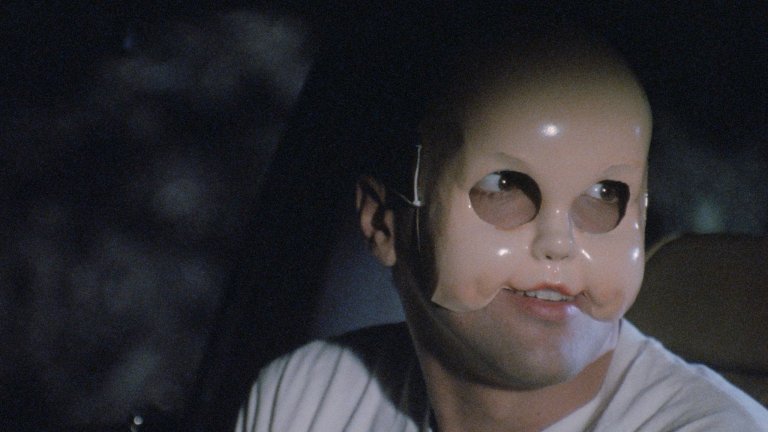
There’s so much that can make a movie be considered obscure. It could have never been released into the light of day and only available on a pirated VHS for some time. Maybe it was subject to only a limited release. Some pictures may have had their fair recognition in their day, only to be forgotten through time, or maybe they’re just better known in other countries. Others are small indie projects that unfortunately weren’t as widely watched or recognized. All of the above can be true, however, the only real qualification a horror film needs to be considered obscure is for it to have a general underappreciation—it may be lesser known, not enough fans of the genre may have seen it, or it flew under the radar of most viewers.
These types of films are celebrated in web forums or among knowledgeable lovers of the genre, while many don’t get even a portion of the praise they deserve. So many obscure horror films linger in the archives, collecting dust in the shadows, when they are in fact quite remarkable (or thoroughly entertaining in the least). Among these obscure films are hidden gems of art that merit being on your screen. With the rise of streaming services, there may be some that can be found there, but don’t worry because included are links to get your own physical copy for mostly every movie on this list.
If you’re craving a silent black and white expressionist film, a pre-code classic, a gothic horror, a wild experimental 70s film, an 80s or 90s treasure, an under-the-radar Y2K scary movie, or something more modern that’s a slasher, sci-fi horror, found footage flick, or psychological horror—we’ve got you covered with this and more.
Table of Contents
Forgotten black and white horror movies (1919-1965)
Eerie Tales (1919)
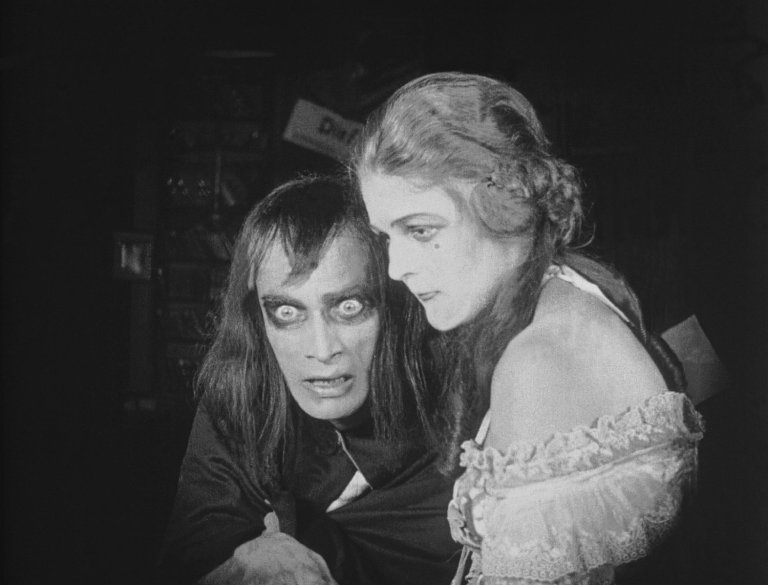
In this silent German expressionist anthology film, paintings in an antique bookshop come to life at midnight—Death, the Devil, and the Harlot—and recount five macabre tales. The same three actors who play the aforementioned characters are featured in different roles in each story. The first tale, “The Apparition,” an adaptation of Anselma Heine’s 1912 novel of the same name, tells the story about a woman who disappears from her hotel room and whose existence is subsequently denied by everyone there. “The Hand” by screenwriter Robert Liebmann is about two men who vie for the attention of a cabaret dancer. One man is murdered by the other and comes back from the grave to seek revenge on his opponent. The third segment “The Black Cat” is an adaptation of Edgar Allan Poe’s famous short story. Robert Louis Stevenson’s “The Suicide Club” is adapted in the fourth tale and focuses on a detective who encounters a secret society with sinister intentions. In “The Spectre,” a man encourages his wife to have an affair with a stranger. Each story is surprisingly modern in feeling and has a good twist.
Genuine: The Tragedy of a Vampire (1920)
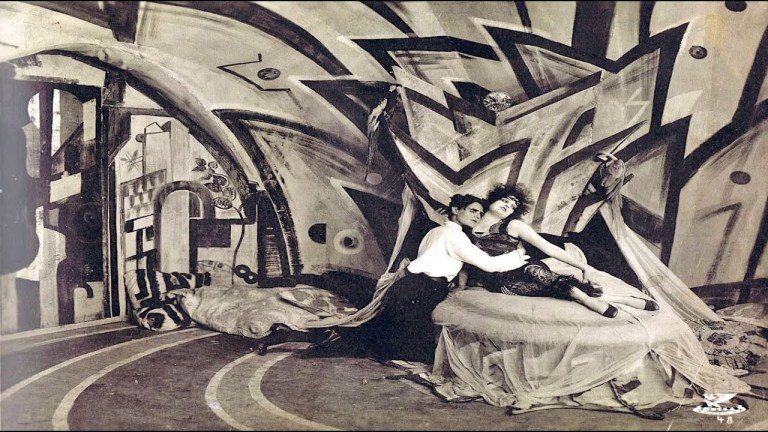
Genuine was directed by Robert Wiene, the director of The Cabinet of Dr. Caligari (1920), and has often been called an unsuccessful try-hard copycat of the latter, but Genuine deserves a lot more respect for its depth and artistic substance than it gets. This silent German expressionist film is a visual phenomenon and a picture worth watching for that reason alone.
The movie opens with an artist named Percy (Harald Paulsen) reading his favorite book about the high priestess Genuine (Fern Andra). He has recently started displaying odd behavior after completing her portrait. Percy falls asleep and the high priestess comes to life, steps out of the painting, and escapes. She’s kidnapped, forced into slavery, and “bought” by a rich aristocrat who cages her and dresses her in startling lingerie. The rest of the movie focuses on Genuine’s ascent from her underground prison.
The expressionistic design, the actors’ jerky movements, and the lack of coherence in the plot implies that what the viewer is witnessing is a dream. Is Genuine real or an idea? The film’s only fault may be Genuine’s treatment as a monster—her victim-to-succubus transition. The story would have you believe that she’s a beguiling woman who destroys men simply because she enjoys it. Her cruelty and vengeance is never treated as an understandable reaction to her trauma, instead it’s painted as something terrifying.
The Drums of Jeopardy (1931)
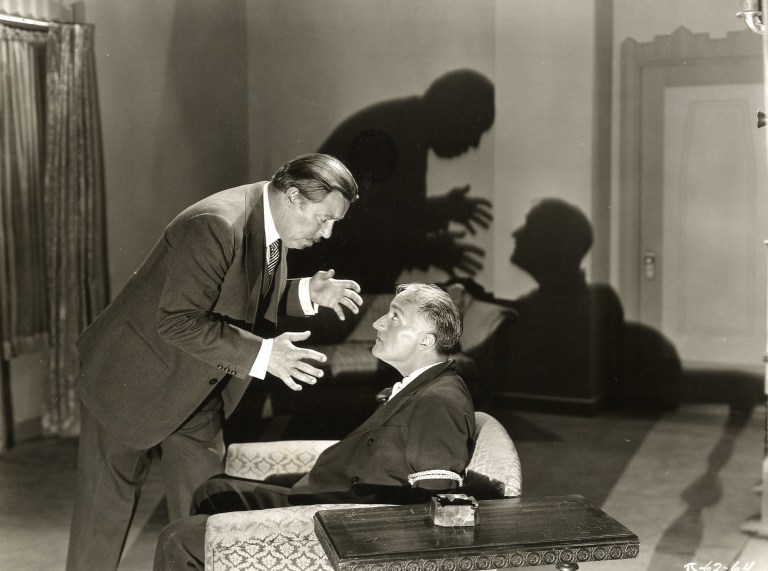
This American pre-code horror film is an adaptation of Harold MacGrath’s novel of the same name. It was the second time this story was adapted into film, the first time being in a 1923 silent film, which is now preserved in the Library of Congress. The sets in this 1931 flick were designed by one of the first women to achieve success as a set designer in Hollywood, art director Fay Babcock. The movie focuses on a “mad” scientist, Dr. Boris Karlov (Warner Orland), who vows revenge against the Petroffs, the family he blames for his daughter’s suicide. Drums of Jeopardy provides an intriguing villain with a compelling descent into madness. It’s atmospherically shot and does a lot with very little—there’s sadistic death traps, thrilling action scenes, foot chases, and much more.
The Mad Genius (1931)
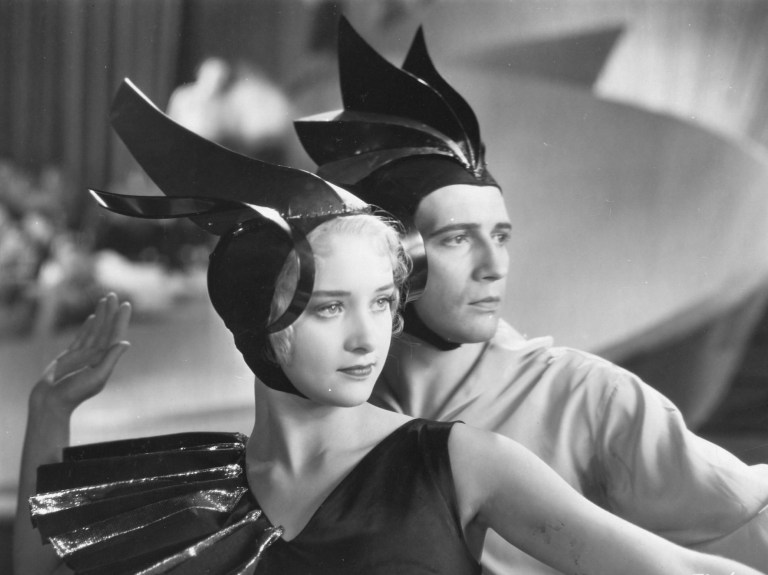
The Mad Genius is a fairly unknown and virtually forgotten psychological horror drama starring John Barrymore plays Ivan Tsarakov, a disabled puppeteer who’s obsessed with ballet and frustrated with the fact that he will never be able to dance. He adopts a young abused boy, Fedor Ivanoff (Frankie Darro as a child, Donald Cook as an adult), and makes him his protegé and the vessel for all his ballet dreams. Fedor has a natural talent, and Ivan ends up shaping him into the greatest dancer in the world. When Fedor falls in love with the beautiful ballerina Nana Carlova (Marian Marsh), Ivan refuses to relinquish control of Fedor and will do everything in his power, even commit the most nefarious acts, to tear the two apart. It’s a compelling story with a villain at the center whose obsession with artistic perfection extinguishes all his humanity.
The Night Has Eyes (1942)
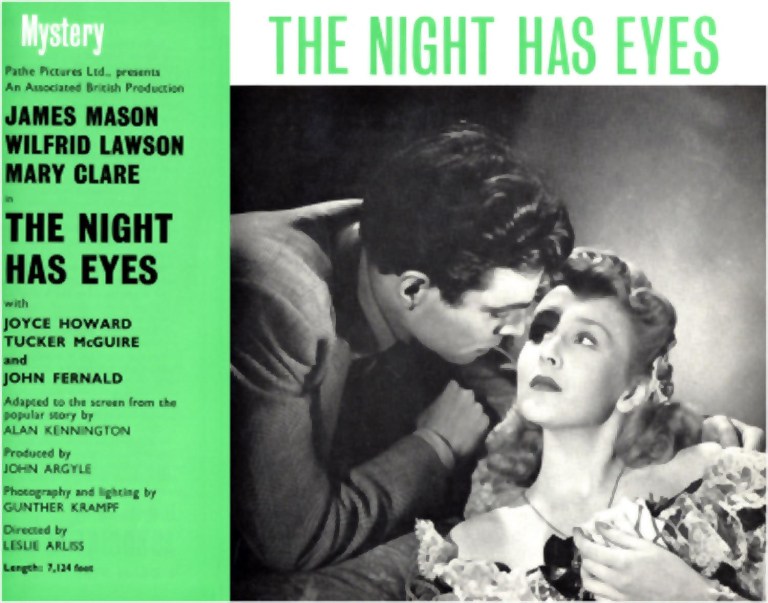
This British mystery has everything you could want in a cozy classic horror film—atmosphere, an isolated house with a secret room, fog, a storm, a young heroine, a brooding leading man (beautifully played by James Mason), and a twist you won’t see coming. Two young teachers, Marian (Joyce Howard) and Doris (Tucker McGuire), visit the Yorkshire moors one year after their friend Evelyn disappeared there. Caught in a storm on a rainy night, they take shelter in an old and lonely cottage, home to Stephen (Mason), a reclusive pianist with trauma from the Spanish Civil War. They both come to believe that he may be Evelyn’s murderer. Doris flees as soon as the weather allows, but Marian’s suspicions in conflict with her growing affections for Stephen compel her to stay put.
The Queen of Spades (1949)
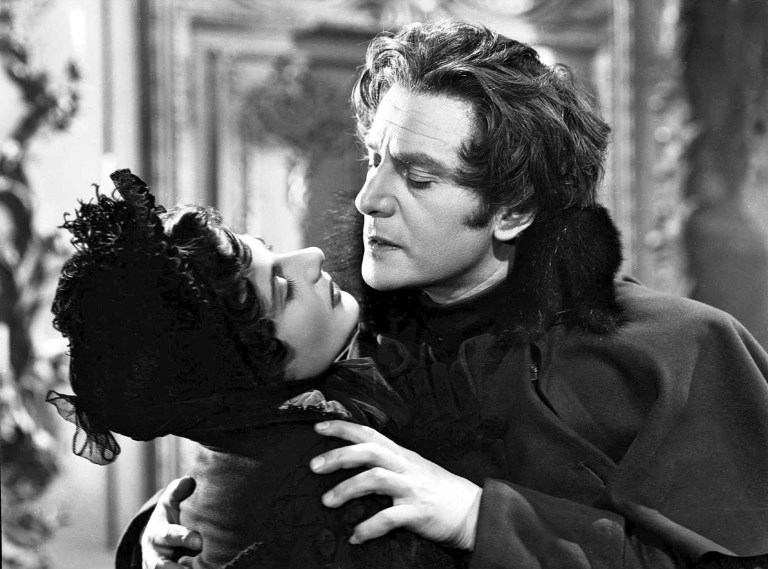
Decadent and ghoulish in atmosphere, with sumptuous cinematography, the British The Queen of Spades is a meticulously crafted fantasy-horror film about human frailty, greed, and the soul’s irresistible temptation by the allure of power and money. The movie is based on Alexander Pushkin’s 1834 short story of the same name. It tells the story of Captain Herman Suvorin (Anton Walbrook), a relatively poor Russian officer who is bitter towards the wealthier cavalry officers around him. He dreams of making a fortune by playing faro. After reading The Strange Secrets of the Count de Saint Germain, a book about people who sold their souls for influence, money and power, he’s certain that the elderly Countess Ranevskaya (Edith Evans) knows the secret to making his dream a reality. His quest, which includes seducing her young ward, takes a dark and eerie turn and he finds himself haunted by the woman’s ghost.
The Witch (1954)

La Bruja is a Mexican film with elements of gothic horror, suspense, melodrama, and science fiction. The movie is full of unforgettable scenes. It’s directed and co-written by Chano Urueta, a director responsible for some of the most interesting Mexican films of that era—he was truly a man with a vision. A genius scientist, Dr. Boerner (Julio Villarreal), sets his price for a secret formula to a revolutionary antibiotic he’s created. Instead of paying his asking price, two ruthless pharmaceutical businessmen hire a couple of goons to break into his laboratory to steal it. His daughter is killed in the process. Consumed by his desire for revenge, he uses an abused and disfigured young woman known as La Bruja (Lilia del Valle) to execute his plan. She’s forced to drink a potion he has created which transforms her into a beauty. Now going by Countess Nora, she takes her place in high society to help him enact his vengeance, but things don’t go as planned.
Lady Morgan’s Vengeance (1965)
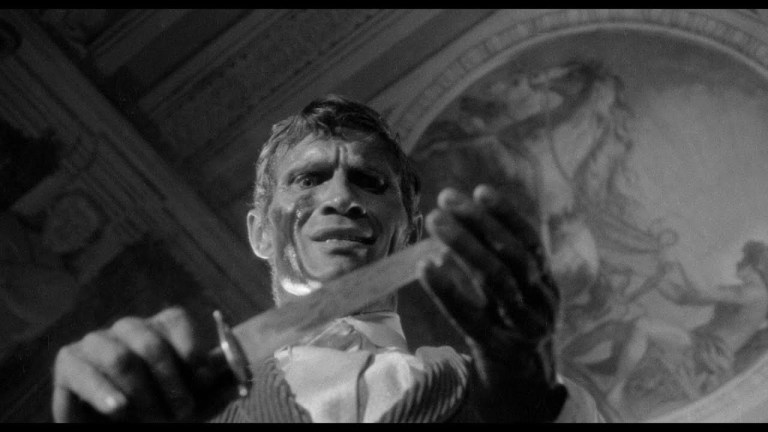
Lady Morgan’s Vengeance is an Italian horror film directed by Massimo Pupillo and written by Gianna Grimaldi. It was the last film in the genre directed by Pupillo, and certainly his most peculiar. He later turned down offers to direct other horror films. This gothic pulp horror focuses on Lady Susan Blackwood (Barbara Nelli), who finds herself feeling insane after her lover mysteriously vanishes. She marries a man she doesn’t love, one who only sees her as a human jackpot and who is responsible for her true love’s disappearance. Her new husband and his conspirators hypnotize her into jumping to her death and her ghost comes back to get revenge on them all. The film starts out as a slow-burn and as a seemingly gaslight story, then kicks into overdrive in the second half with its gothic supernatural tale.
Forgotten horror movies (1970s-2000)
Nightbirds (1970)
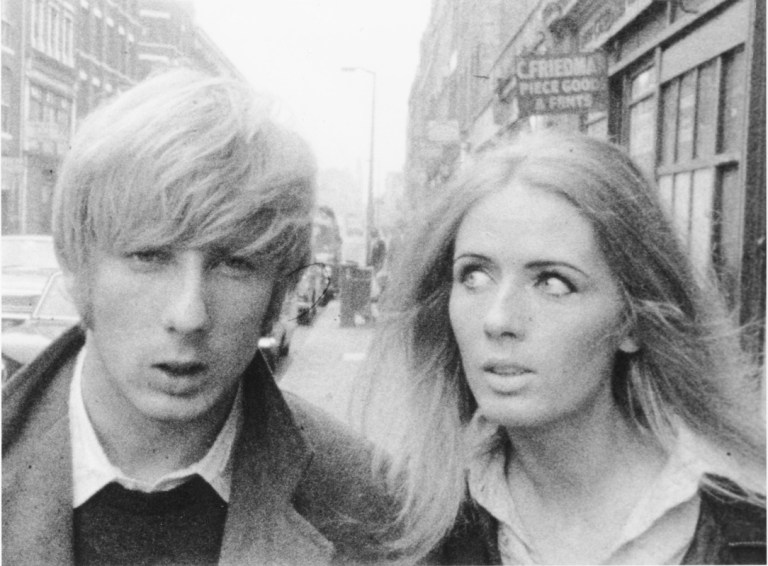
Nightbirds isn’t a gory or jumpscare kind of horror film—it’s an intimate and almost nihilistic masterpiece about two extremely damaged people. This is a piece of work that will cut you to your core, one with an ending with the power to completely destroy you. You won’t find peace for some time after watching it. The movie is experimental in style, shot in gorgeous black and white cinematography on 16 mm film, and has an uncharacteristically serene camerawork about it. The camera moves slowly, forcing the audience to observe and absorb the intimate moments between its two characters. It focuses on Dink (Berwick Kaler) who meets Dee (Julie Shaw) while struggling on the streets of East London. The beautiful young woman invites him to stay at her place for a while and immediately a romance sparks between the two. Soon their relationship descends into unimaginable darkness.
At the Meeting With Joyous Death (1973)
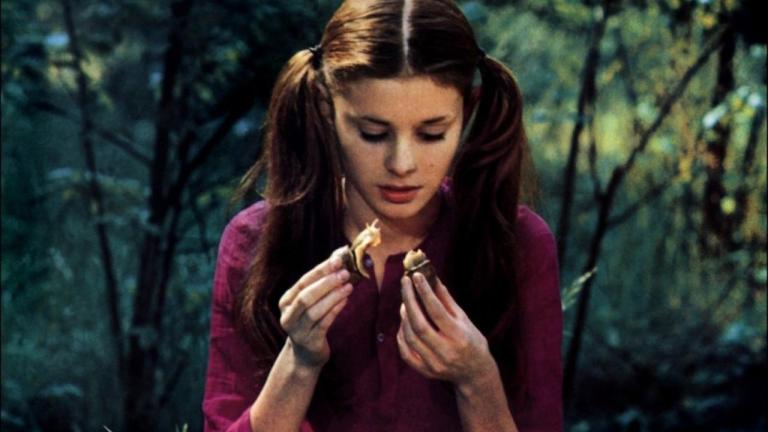
Au rendez-vous de la mort joyeuse is a French-Italian horror film released under the international title of At the Meeting with Joyous Death and as Expulsion of the Devil in the US. A successful illustrator’s family moves into an old country house and soon they begin to experience strange phenomena. Windows shatter for no apparent reason. His illustrations and work are destroyed. The 14-year-old daughter begins to display bizarre behavior. The refrigerator attacks a family friend. A TV crew is brought on to do an exposé on the house. At the Meeting with Joyous Death offers a pervasive atmosphere of dread. The first 20 minutes are a slow-burn, then the tension is built and kept up with an almost documentary-like approach. It’s a poltergeist movie, but it’s also a coming-of-age tale about a girl’s sexual awakening manifesting through paranormal activity and vice versa—a connection which is never made explicit in the film. Full of surprises you won’t see coming, this film is a terrifying spectacle and a truly ambitious and impressive piece of horror.
Beauty and the Beast (1978)
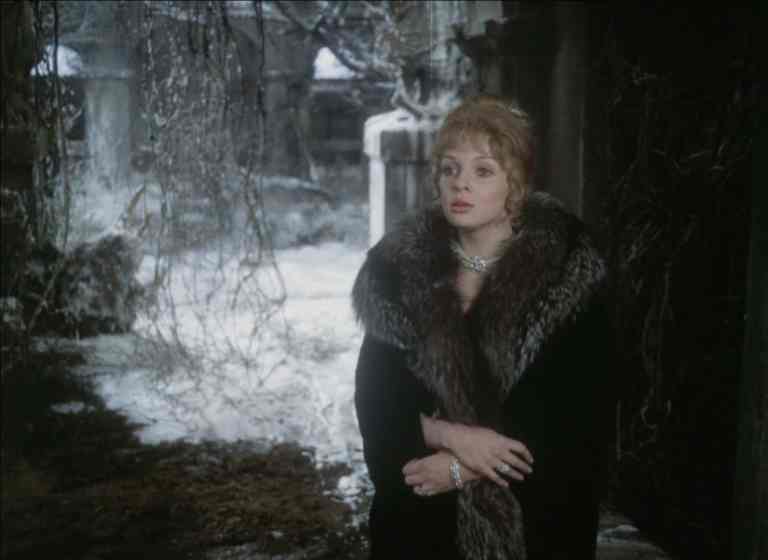
Released in Czechoslovakia as Panna a netvor, this movie is a richly decadent, beautiful gothic horror retelling of Beauty and the Beast with fantasy elements. Although the film remains faithful to the original story in many ways, it has several tweaks which make it wholly its own. Here, the beast is a monstrous winged creature with a bird head. Belle’s counterpart, named Julie (Zdena Studenková) in this story, isn’t aware of the Beast’s ghastly appearance, as she’s forbidden from looking at him. The two fall in love, just like in the “tale as old as time.”
Bloodstream (1985)
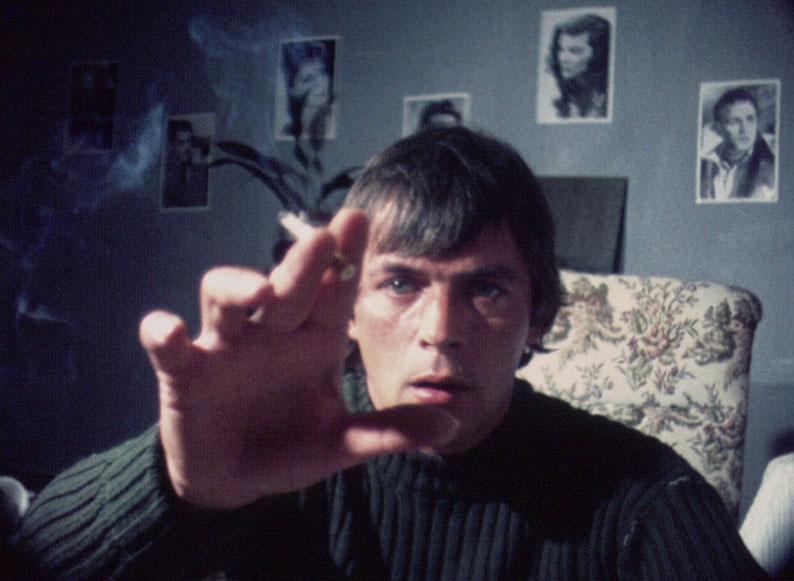
The late British director Michael J. Murphy had a true passion for filmmaking and never let his lack of resources limit his ambitions. Out of all his movies, ranging from psychological thrillers to post-apocalyptic science fiction to fantasies to horror, Bloodstream remains the most intriguing. It’s a low-budget late night, post-edible kind of watch and a middle finger to the industry that ripped him off. Murphy made this movie after a poor experience with distributors in which he was stiffed out of money. A personal project for Murphy shot in 8mm, the film revolves around Alistair, a director whose video distributor stiffs him out of his profit. He decides to create a snuff film where he brutally murders those who have wronged him. The kills in the movie are interrupted by horror shorts Alistair watches on his TV—a movie about a mummy, a vampire film, a werewolf picture, an exorcism flick, and more. The movie makes commentary on the industry who exploited and shunned him and on the Video Nasties phenomenon of the time. Bloodstream was only available on bootleg VHS and never had an official release—until today.
Star Time (1992)

The surreal Star Time, if it were better known, would be highly regarded and get praise like the films of David Lynch and David Cronenberg. The movie is a must watch for fans of Eraserhead (1977) and Videodrome (1983). It’s a movie ahead of its time, a dreamlike compelling slasher about misfit Henry Pinkle (Michael St. Gerard) who becomes suicidal after his favorite TV show gets cancelled. When he’s about to end his life by jumping off a bridge, he’s approached by a mysterious elderly man who talks him out of it and eventually promises him stardom if he becomes a hired killer. Soon Henry sets off to follow his destiny by donning a baby mask and hatchet.
Forgotten modern horror movies
Wishing Stairs (2003)
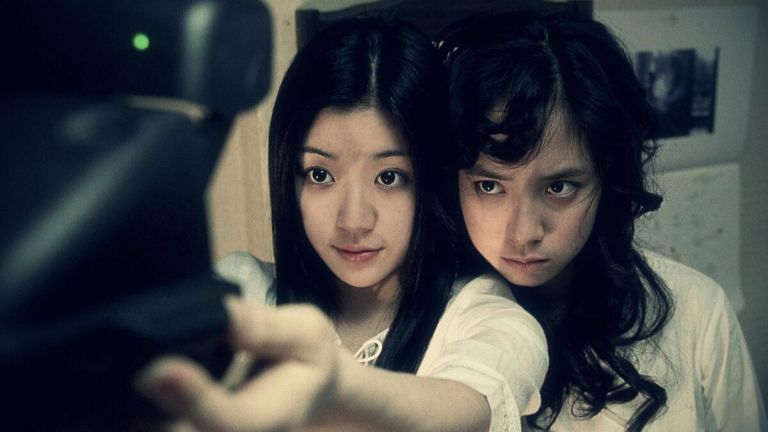
Wishing Stairs is a South Korean picture and the third installment of the Whispering Corridors film series (all stories have different settings, plots, and characters and are unrelated to each other). This one is most definitely for the girlies and for those who enjoy stories that explore the complexities of female friendships and relationships. There’s ballet, jealousy, obsession, urban legends, toxic friendship, ghosts, love, and vengeance. It’s beautiful, tragic, and extremely queer. Wishing Stairs brings to life a tale that will haunt you. The movie revolves around a competitive ballet department at an all-girls boarding art school. The dorm comes with a legend: if you count all 28 steps aloud while climbing them, a 29th extra step may appear with a spirit that will grant you a wish. Things take a dark turn when desperation leads one girl to try it out to have her dream fulfilled of earning a spot at a Russian ballet school.
YellowBrickRoad (2010)

This overlooked 2000s gem is a completely unhinged, unsettling and terrifying film that will crawl under your skin and stay there, especially if you appreciate its end—one that is of much debate among obscure horror fans. You’ll either love it or hate it. If you love it, the movie is one of those unnerving, cerebral types that does something so special it stays with you and you can’t help but think of from time to time. YellowBrickRoad doesn’t merely scare the viewer, but it deeply disturbs its audience. It has one of the most unique and interesting premises with a truly original take on the wilderness horror subgenre. In 1940, after a viewing of The Wizard of Oz, the entire town of Friar, New Hampshire—572 people—walked up a winding mountain trail into the wilderness with nothing but the clothes they were wearing. Only 300 bodies were recovered by the US Army. Some froze to death. Others were brutally and mysteriously slaughtered. The remaining 272 townspeople were never found. The trail was designated as classified by the military and the town eventually repopulated, keeping their history hush hush. In the present day, the trail is declassified, and a film crew arrives to investigate.
In Fear (2013)

Although this British movie had its premiere at the 2013 Sundance Film Festival and was well received by critics, it remains a criminally lesser-known and underrated psychological horror. The movie will fill you with fear, dread, and lots of anxiety. Buckle up for this brilliantly stressful ride (pun intended). A young couple very early in the courting phase of their relationship drive across rural Ireland to a music festival. On the way, they stop at a local pub and when confrontation ensues, they get back on the road only to find themselves driving in circles. Do they have an unknown and unseen tormentor? Or is there a sinister force at play?
Lake Bodom (2016)
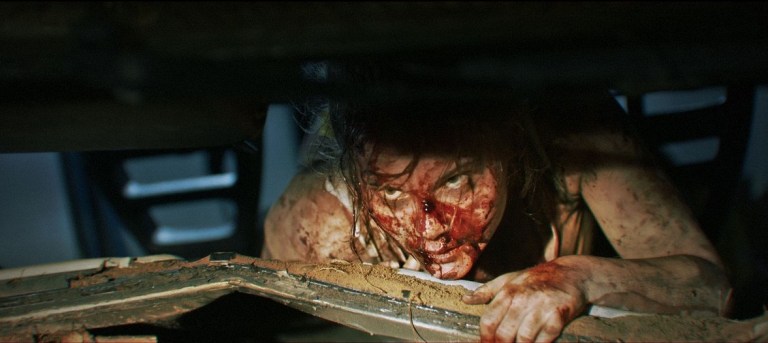
This Finnish slasher will completely exceed your expectations with twists, reveals, and by turning the final girl trope on its head. It’s a brutal story about lies and deceit. Before watching the movie, you should look into the real life 1960 Lake Bodom murders, an infamous unsolved case in which four teenagers were stabbed to death in their tents while sleeping. In this movie, a group of four teenagers visit the same campsite to reconstruct the murders in the hopes of solving the case.
Replace (2017)
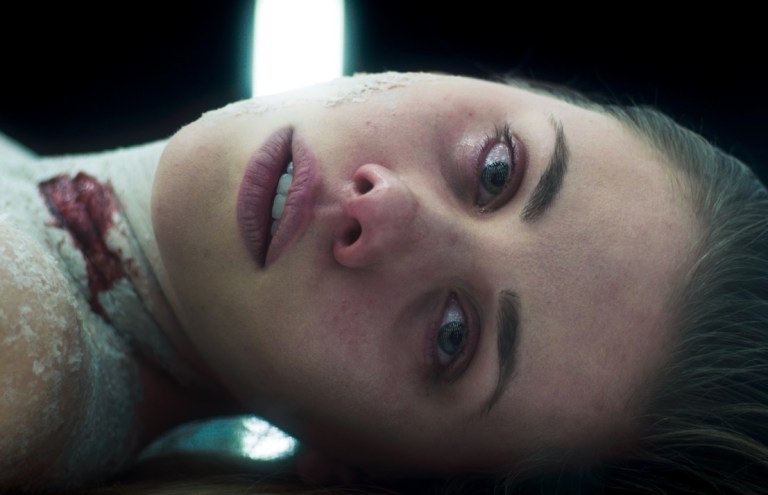
This smartly written body horror features scream queen Barbara Crampton in a big role and would make David Cronenberg proud. It’s a deliciously nasty and bizarre movie with a dreaminess factor that won’t be everyone’s cup of tea, but even those who won’t be too crazy about it will be able to appreciate its beautiful Argento-like color palette. The stunning Kira Mabon (Rebecca Forsythe) has a strange disease that causes her skin to dry out and crumble away—she’s aging rapidly. When she discovers that she’s able to replace her skin with someone else’s, she’s willing to pay whatever price to avoid withering away to death.
The Dark (2018)
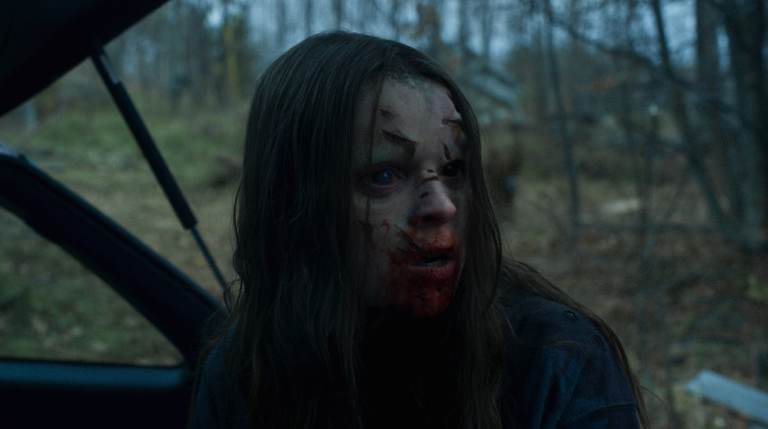
The Dark is an unconventional coming-of-age tale with a somber, introspective nature. It deals with some heavy themes, like the effects of abuse and sexual trauma and how the body and mind learn to cope. This movie will terrify you, it will enrage you, it will gut you, and it will leave you feeling extremely sad. The supernatural story focuses on the friendship between Mina (Nadia Alexander), a murderous undead girl who was a victim of terrible crimes living in the woods, and Alex (Toby Nichols), an abused blind boy who she saves.
A Ghost Waits (2020)

This hidden gem is an emotional, raw, and sincerely beautiful piece of work shot in black and white and clearly inspired by movies of the 1920s and 1930s. The modern story centers around a handyman who encounters a ghost at a house he’s preparing for the next resident. Instead of succumbing to fear, he finds himself intrigued by this spirit who calls herself a “spectral agent”—it’s her literal job to scare people out of the house. The movie is one that transcends genre—it’s half a supernatural story and half one of love. It’s a movie about isolation, loneliness, purpose, and living a life fulfilled. A Ghost Waits is a touching and well-written film with two incredibly likable characters who will find their way into your heart. Don’t watch this unique picture when you want to be scared, but rather when your heart is yearning to feel something.
Dawn Breaks Behind the Eyes (2021)
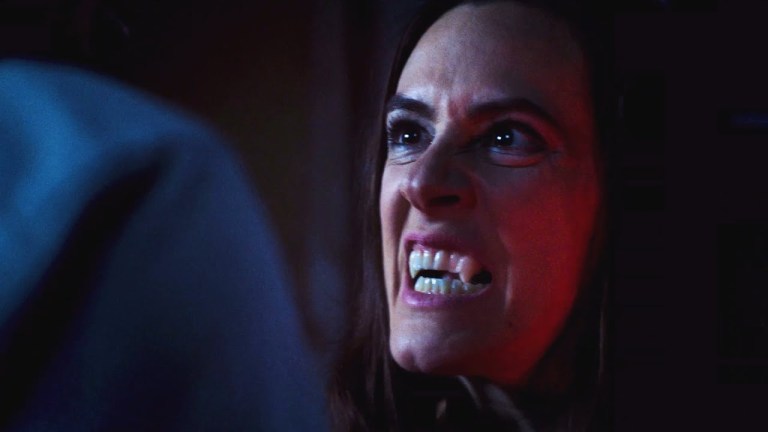
Dawn Breaks Behind the Eyes is one of the most unique and stunning pictures you’ll tick off your watch list. This German horror film was one of the best horror movies to come out in 2021. It’s experimental in style. It’s dreamlike. It’s heavily influenced by gothic horror films of the 70s. It also serves as a stylized ode to giallos. It’s a psychedelic trip you won’t be able to get out of your mind. You think you’re watching a specific movie only to discover that you’re experiencing something else entirely. It starts off with a couple spending eternity inside a castle, only to have their reality shift. The less you know going in, the better.
Torn Hearts (2022)
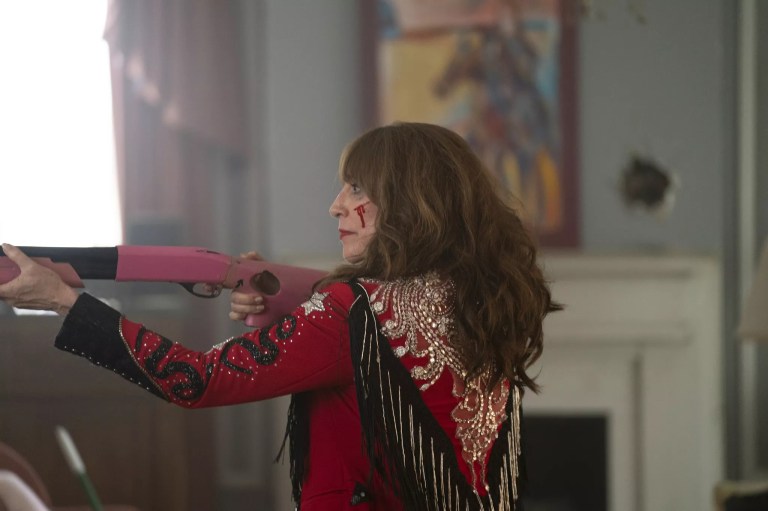
Director Brea Grant’s talents shine in Torn Hearts, a horror psychological film starring Katey Segal as Harper Dutch, a 90s country star now living as a recluse in her private mansion in Nashville. She retired after her sister, the other half of her band, was murdered when they were at their peak. A promising up-and-coming country duo consisting of two young women, Jordan (Abby Quinn) and Leigh (Alexxis Lemire) seek her out in the hopes she’ll come back to the limelight and record a song with them. “No” is the worst that can happen, right? Wrong. What begins as a friendly visit quickly spirals into a descent into hell which forces the girls to confront just how far they’re willing to go to fulfill their dream. It’s a vicious story about ambition, friendship, betrayal, and jealousy. Each of the characters are fleshed-out in this richly detailed production, with great performances by the cast, but it’s Segal who’s the star.
Where the Devil Roams (2023)
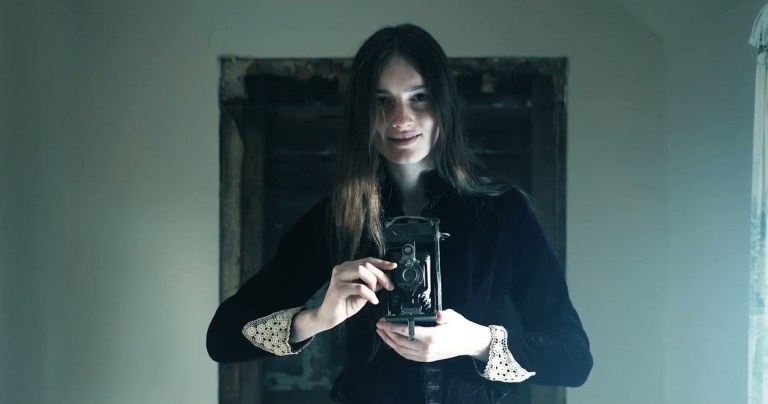
Where the Devil Roams comes from the Adams family, the same trio who brought horror fans Hellbender (2021) and The Deeper You Dig (2019), two other under-the-radar gems that are must-sees. They bring to life movies that are in no way meant to be mainstream, and out of all of them, this one is probably the most obscure—it’s definitely the most macabre and weird. The movie is a visually stunning piece of work that follows a family of murderous sideshow circus performers. It’s definitely not for everyone—you’ll either love it or fail to understand it. As of now, it’s available to watch on Tubi.
More obscure horror movies…
Warning Shadows (1923) a German silent film that takes place at a dinner party attended by a wealthy count, his beautiful wife, and four of her suitors. A shadow-player gives visions of what may happen if the men don’t stop shamelessly pursuing his shameless flirt of a wife.
Wolf Blood (1925) a silent horror Western movie that focuses on a man who after receiving a wolf blood transfusion as a last resort to save his life, begins to have dreams about running with a pack.
Alice in Wonderland (1933) an accidentally terrifying and definitely psychedelic adaptation of Lewis Caroll’s classic story.
Dementia (1955) is shot entirely without dialogue and is a surreal nightmare-horror movie that follows a tormented young woman suffering from homicidal guilt.
Night of the Eagle (1962) a skeptical professor who discovers his wife has been practicing dark magic forces her to leave the occult behind.
A Quiet Place in the Country (1968) an Italian experimental film about an artist struggling with a creative block who decides to rent a place in the country. As he restores it, he’s plagued by ominous noises and comes to learn the history about the young countess who used to live there.
And Soon the Darkness (1970) two young nurses go on a cycling tour of the French countryside. When one vanishes, the other frantically searches for her. The movie was remade in 2010 and stars Amber Heard.
Morgiana (1972) a delirious gothic horror from Czechoslovakia. It revolves around a young woman whose jealousy and greed drives her to dose her sister’s tea with a slow-acting fatal substance.
Symptoms (1974) a British psychological gothic horror that is dreamlike in nature. It tells the story of Helen (Angela Pleasance), a reclusive young woman, and her friend Anne (Laura Heilbron), who she invites to stay with her in her English country mansion. As Helen’s emotional state deteriorates, a question arises—is she really who she portrays to be?
Alison’s Birthday (1981) Alison (Joanne Samuel) and her friends try to contact a spirit on her 16th birthday. She’s warned of impending doom to come when she turns 19.
Pin (1988) an under-the-radar horror movie in the evil doll subgenre that you most likely might have missed. It tells the story of a young boy who comes to believe a medical dummy who becomes his only friend is alive. The years go by, he turns 18, and he still believes Pin the dummy is living and breathing—a fixation that spirals into darkness and madness.
Scary Movie (1991) a nerdy teenager attends a spookhouse in a small Texas town on Halloween night and comes to believe an escaped mental patient may be hiding in the haunted house.
Spider (1992) a Latvian psychosexual coming-of-age horror about a young girl who agrees to pose as Virgin Mary for a painter and begins having dreams focusing on a giant arachnid.
Anatomy (2000) a German film about an ambitious medical student who discovers a centuries-old society at her school.
Hotel (2004) a rich and strange Austrian film about a young woman who takes a job at a hotel deep in the Austrian Alps, where she learns the girl she replaced disappeared without a trace.
Exhibit A (2007) an fairly unknown found footage movie that’s so terrifying because of how real it feels. It offers a chilling and uncomfortable look at the disintegration of a family caused by a father’s financial pressure. This one is extremely hard to watch.
Kill Theory (2009) a guilty pleasure type of horror about a group of friends celebrating graduation at a secluded vacation home. They’re targeted by a killer who forces them to play a sadistic game in which they have to kill each other to stay alive.
Livid (2011) remained on the shelves for years until it was put on Shudder. The French horror is about a trio who tries to find a treasure hidden at an old woman’s home, a once renowned dance teacher. There they encounter supernatural events.
The Devil’s Carnival (2012) a group of sinners are invited to a theme park where they endure their transgressions over and over.
Banshee Chapter (2013) a fairly unknown sci-fi horror mystery about a journalist’s journey in finding her missing friend, who had been experimenting with mind-altering drugs and who she believes ingested a top secret government chemical. It’s loosely based on H.P. Lovecraft’s “From Beyond.”
The Girl With Two Faces (2016) a French film definitely inspired by Eyes Without a Face about a young woman who spends the night with a beautiful man only to be kept hostage in his mansion. There she’s forced to play the role of his deceased wife.
Fashionista (2016) a woman who co-own a vintage clothing store in Austin and who is having trouble in her marriage descends into darkness after sleeping with a stranger.
The Dark Tapes (2016) a found footage anthology horror film with sci-fi, vampires, demons, and so much more.
Antrum (2018) begins as a mockumentary about an obscure horror film that is rumored to be cursed. After some time, the “documentary” warns the viewers to proceed with caution and shows the film, which is about two siblings who venture into the forest to dig a hole to hell to rescue their dead dog.
Knuckleball (2018) a 12-year-old’s grandfather dies suddenly in the night and he finds himself alone and targeted on the isolated farm.
Body at Brighton Rock (2019) an inexperienced part-time park ranger stumbles upon a dead body on a mountain trail and must guard it until responders arrive. She loses her radio and throughout the night she comes face to face with some of her darkest fears.
Dark Encounter (2019) aliens visit a grieving family on the one year anniversary of their missing eight-year-old daughter. The strange phenomena they experience that night will lead them to the truth.
The Last Matinee (2020) a Spanish-language Mexican-Uruguayan slasher about a projectionist working the last showing of a horror film. The audience begins getting picked off one by one.
To the Moon (2021) a couple’s healing weekend getaway becomes a hallucinatory nightmare when one’s brother arrives.
She Came From the Woods (2022) on the last night of summer camp in 1987, a group of counselors accidentally unleash a decades-old evil.
Moon Garden (2022) is a dark fantasy horror unlike anything in the genre. It follows a comatose 5-year-old girl as she tries to find her way back to consciousness through an industrial wonderland of a dreamscape.
He’s Watching (2022) a found footage horror film that you’ll either love or hate. Two siblings are left alone to fend for themselves while their parents are hospitalized by a virus that only seems to affect adults. A sinister but familiar force begins watching them and tormenting them.
Further reading:
